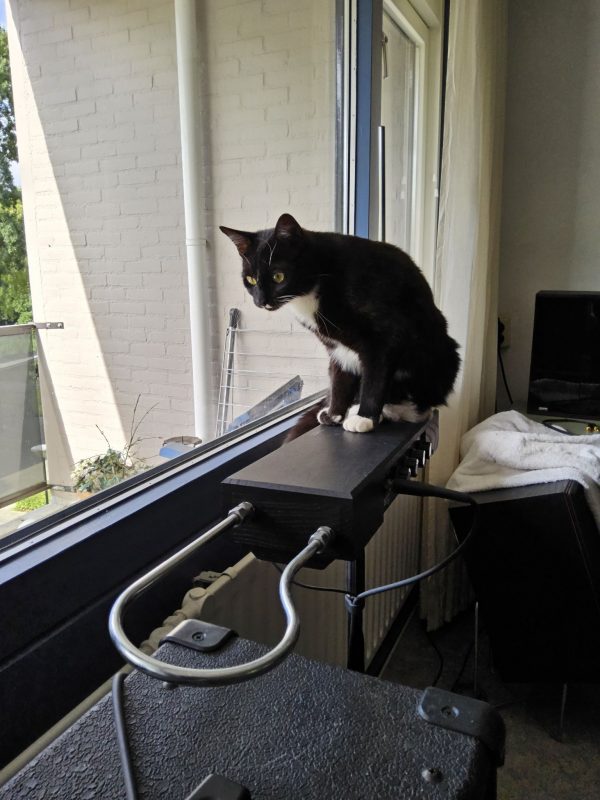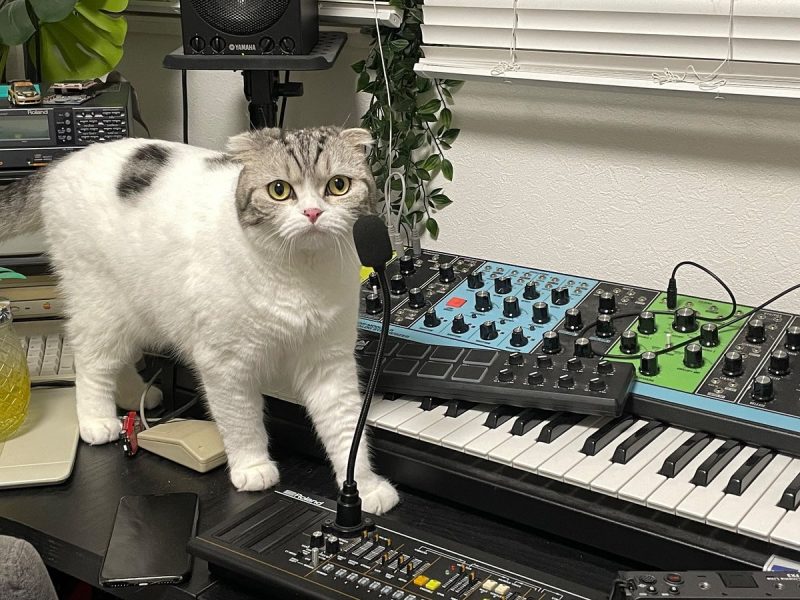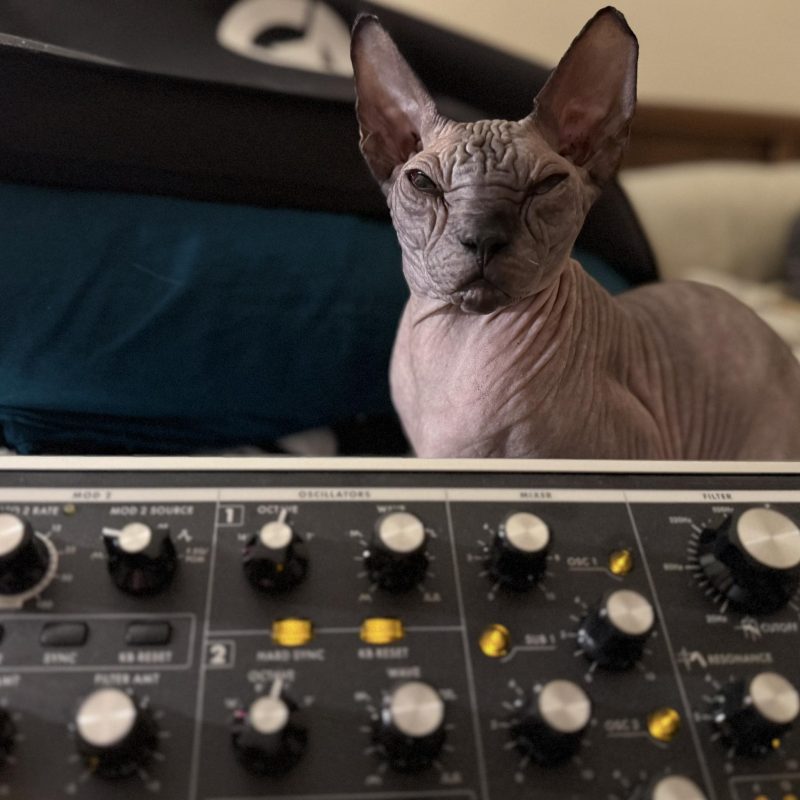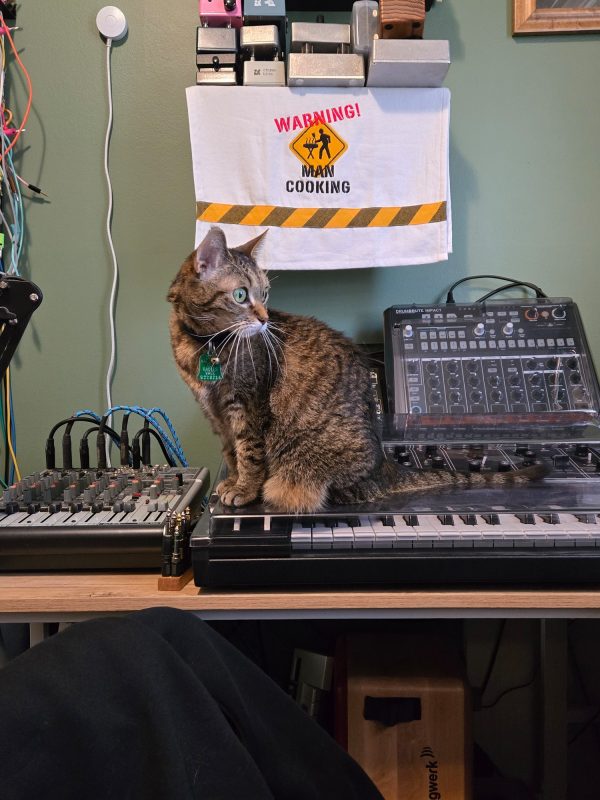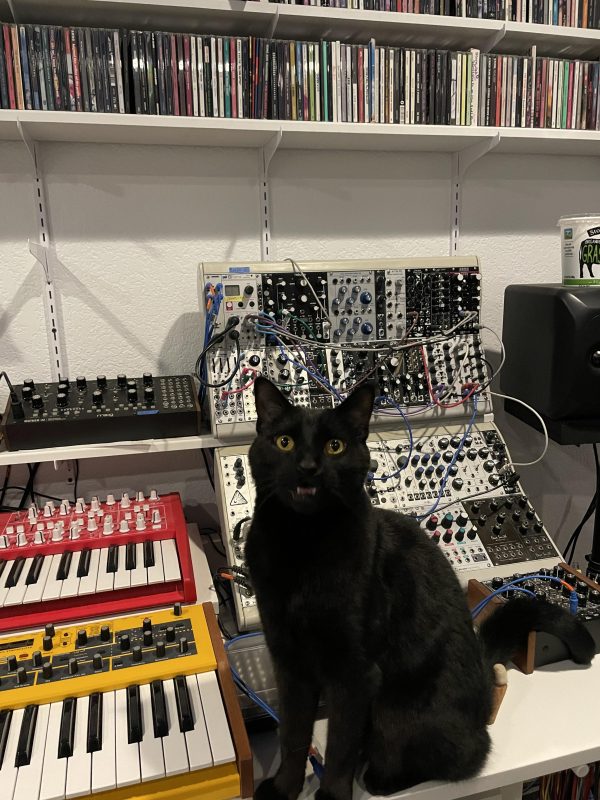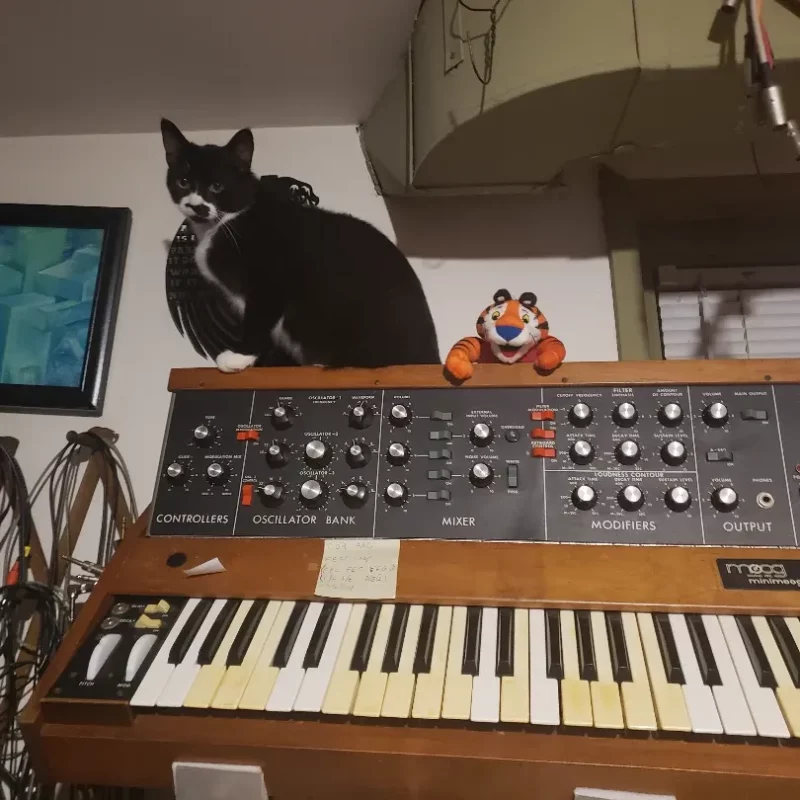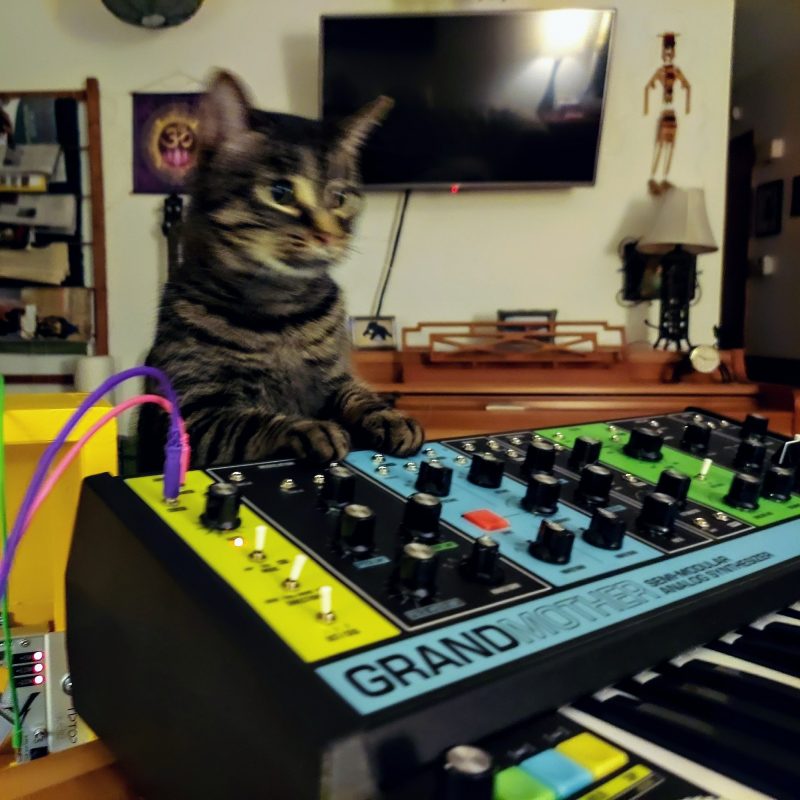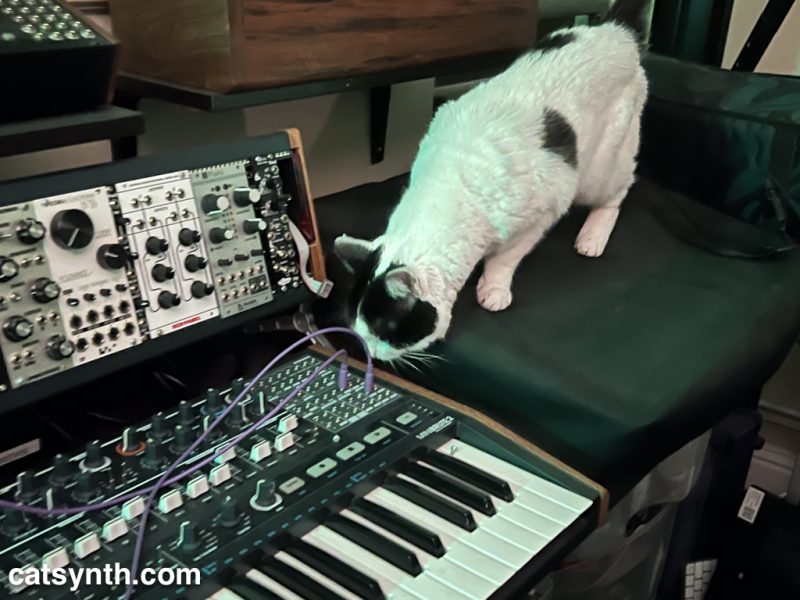From our friend and CatSynth TV superfan I Love Cats and Synths, we have a video featuring the beautiful Bella!
I was playing with the Matriarch arpeggiator when Bella stepped on the TEO-5 sequencer button and started it playing a preset sequence which actually went well with what I had going already. I added another arp from the Take 5 to round it out. My kitty is creative!

